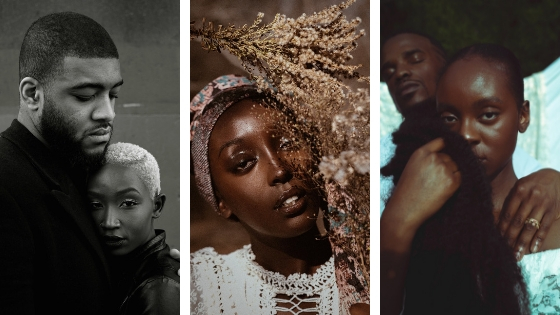By: Temi Thomas, Intern, Creator
As a creative director, I am immediately compelled to fill up a room with spontaneity, color and diversity. It is the world I want to see within the frames of my work, and I know there are communities elsewhere who share that same vision.
Visual content has the power to inspire and move people. It has been proven time and time again. From political cartoons that swayed voters in the era of newspapers to the digital age that has seen the rise of influencer marketing – what we see matters.
“For so long, I was under the influence that cameras couldn’t capture my skin well so I avoided pictures..,” one of my Instagram followers told me. “This is the representation I’m looking for!”
“I get so happy when I see another sista…,” a beautiful brown delivery courier said to me as I approached my car one day.
I can relate to that statement. Launching my career into the world of PR as a graduate intern, I can still count, on one hand, how many of my co-workers look like me. As I began to seriously pursue my passion as a creative director, I often found myself to be the only woman of color in the room, curating the content on the other side of the lens. There have been moments that I have had to fight to be heard during planning conversations. There have been moments I’ve had to push past the imposter syndrome. Those moments feel like I’m representing black women everywhere who wish to do what I do. Those moments feel heavy because I wish it was as simple as just doing what I love.
Reflective of my real life experiences, often in my work there are very few images that include black faces or other communities of color. In my work with various photographers, I can sometimes hear their hesitancy and fear in photographing darker skin tones. There are always technicalities: proper lighting, exposure, or editing during post-production. All of these things loom above them and their work, clouding the bigger picture. However, some of these issues can be avoided by utilizing natural light, investing in at least one additional piece of lighting equipment and taking a few moments to do test shots to check how an image would look upon completion.
The same hesitancy I’ve seen with these photographers can be seen in a broad variety of visual artists and their campaigns – the lack of authentic understanding and representation is obvious. In order to avoid a misstep or invest in modifying the approach to their artform accommodate a broader spectrum of beauty, or, perhaps the potential for backlash, companies choose to avoid inclusion all together.
While networking, I met a photographer, Paa Kwesi Yanful, who noticed the same issues when he tried researching reference images. So he founded an organization called Portraitnoire, whose goal is to increase awareness of “photographs of black people and highlight the community behind it.” Inspired and encouraged, I asked what I could do to help. Along with planning and directing photoshoots, I’ve been assisting in strategy for its social platforms and community outreach since November of last year. Although the organization is still in its early stages, it’s amazing to see the impact and following it has gathered, especially amongst creatives of color. It’s even cooler to create and share content that a younger me would have appreciated seeing.
When I create, I think of the “sistas,” the groups of people missing from the room, a younger, more impressionable me… and I work with them in mind. I challenge myself to make another “sista” feel seen, to include diverse groups, and to produce stunningly accurate visual content that represents the full spectrum of beauty in the world. As an industry, as artists, we must challenge brands to do the same. Because what we see matters.
Photography Credits: Photographers Paa Kwesi Yanful and James Omorodion; Director Temi Thomas
